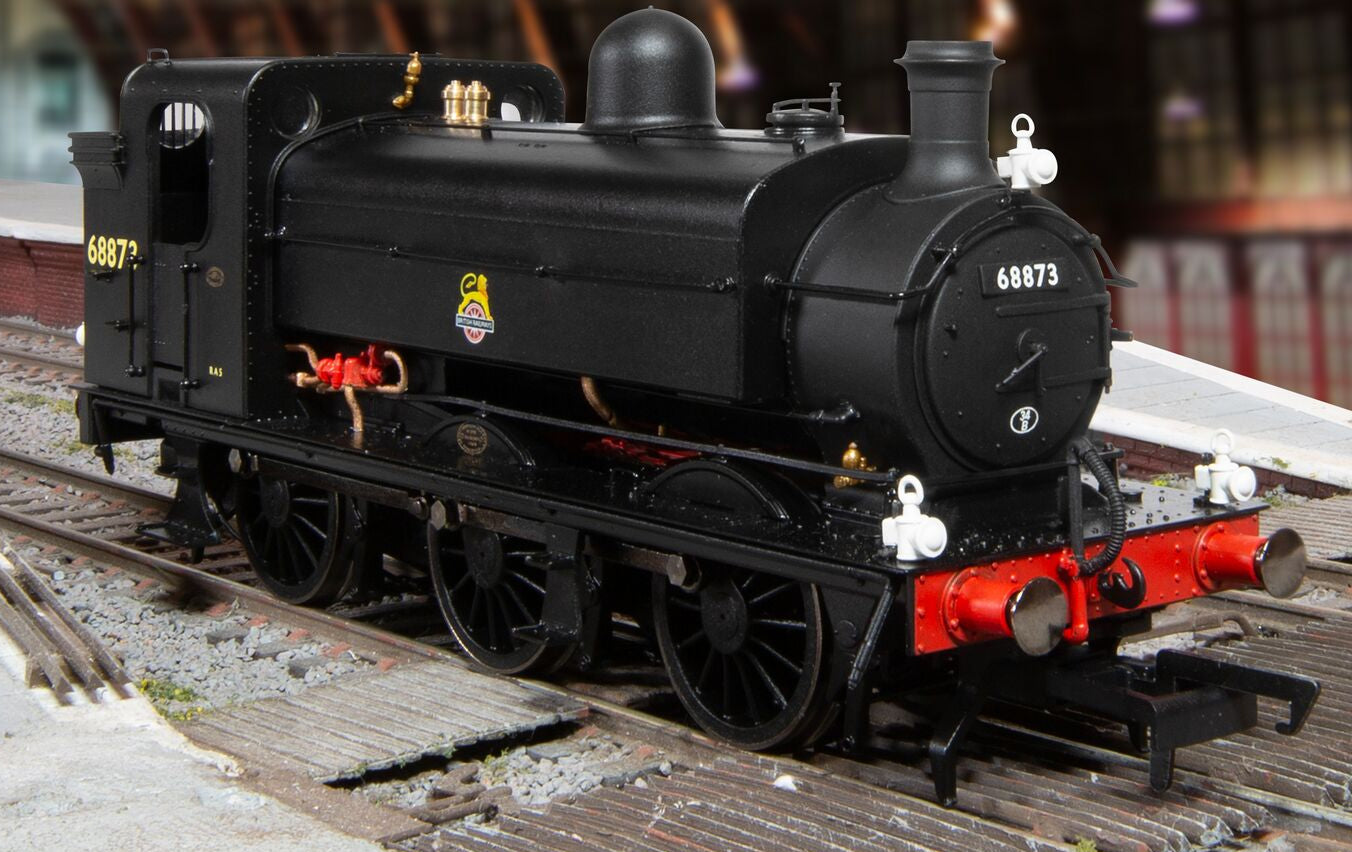Hornby R30367 Class J52 BR Early Class 0-6-0ST 68873 Steam Locomotive







Product Details
| SKU | HOR-R30367 |
|---|---|
| Vendor | Hornby |
| Categories | Best selling products Era 4 HO-OO Hornby Hornby November 2024 Locomotives New products OO Gauge Locomotives OO Gauge scale OO Gauge Steam Locomotives Pre-Orders Steam Locomotives |
| Scale | OO Gauge |
| Share | |
| Features |
|
Product Description
Expected Delivery Q4 2025 / Q1 2026 (Subject to Change at Manufacturer's Discretion).
The Great Northern Railway introduced its J13 Class in 1897 as a development of the J14 0-6-0ST designed by Patrick Stirling which dated back to its introduction in 1892.
The new locomotives were overseen by Stirling’s successor, Henry Ivatt and differed in having a domed boiler of greater diameter. A total of 85 were built between 1897 and 1909 at the GNR’s Doncaster Works and private contractors Robert Stephenson & Co (10 examples) and Sharp, Stewart & Co (25). These would become the J52 Class under the LNER at the Grouping in 1923.
Three of Stirling’s J14s were rebuilt with the larger boiler in 1922 to effectively become J13s, and the remaining 49 members of the class were similarly treated under the LNER, the last in November 1932.
The resultant 137 locomotives were split into two sub-classes by the LNER; J52/1 for the rebuilt Stirling engines, and J52/2 for the original Ivatts. Some of the locomotives were fitted with condensing apparatus for working on the Metropolitan’s underground section on transfer trips to South London.
Those that weren’t used on these duties were mainly employed as shunting engines at large marshalling yards, and the type were a common sight around King’s Cross and Finsbury Park.
A withdrawal programme for the 0-6-0STs started in 1936, but was halted at the outbreak of the Second World War in 1939, which meant a total of 132 locomotives survived until nationalisation in 1948, along with another example in departmental use.
Their time under BR was limited though, as withdrawals once more got underway in 1950 with the arrival of large numbers of the new 350hp diesel electric shunters. The last to be displaced was in 1961, but one example survived to be preserved. That was No. 68846 which was purchased by Captain Bill Smith in 1959, the first ever to be privately preserved from BR service. In 1980 it was donated to the National Railway Museum and is currently on static display at Locomotion in Shildon in lined GNR green as No. 1247.
No. 68873 was built in 1905 at Doncaster Works and entered service with the Great
Northern Railway as its No. 1274, initially allocated locally at Doncaster goods yard.
After becoming LNER No. 4274 in 1924, it was later renumbered as 8873 and made
it into BR service in 1948 as No. 68873. It’s allocations also included King’s Cross,
Hornsey and Colwick, before being condemned in September 1955.
The model is finished in plain black with BR early ‘cycling lion’ crest as applied in the
1950s, with the five-digit number on the increased-capacity bunker sides. The
locomotive also has the later-type safety valves and steam injectors.






